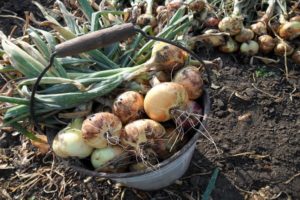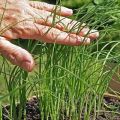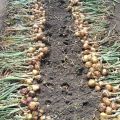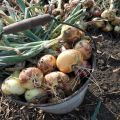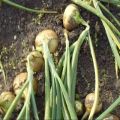When should you store leeks from your garden?
How to store leeks is an urgent question. This vegetable is popular with gardeners. It is grown in summer cottages. Compliance with the rules of agricultural technology allows you to get a good harvest.
But eating a spicy vegetable right away will not work. In its natural form, the curiosity is not stored for long. It is a pity to deprive the family of a vitamin supplement due to ignorance of simple things. A little bit of effort and seasoning will be on the gardener's table throughout the winter season.
The consistency of the vegetable, the content of micro- and macroelements, vitamins depend on when to harvest and how to preserve the crop. It is unlikely that the gardener will be pleased with sluggish greens of an incomprehensible taste. There is no benefit from such a blank.
The difficulty is the impossibility of preserving leeks. The vegetables are harvested fresh, frozen or dried. Competently cleaning, ensuring a presentation is a feasible task for any gardener.
Outlandish onion
Not so long ago, summer residents did not know: what a leek is, and how to grow it. We planted related plants in the plots: turnip, garlic, goose onions. Now it is difficult to imagine a menu without an original spicy vegetable.
The value of the plant is represented by the white thick leg of the vegetable (modified bulb). Its taste is less spicy, slightly sweetish. No bitterness is felt when eating. The onion is pleasant in salads. It adds spice to fried or stews. Children willingly eat the novelty.
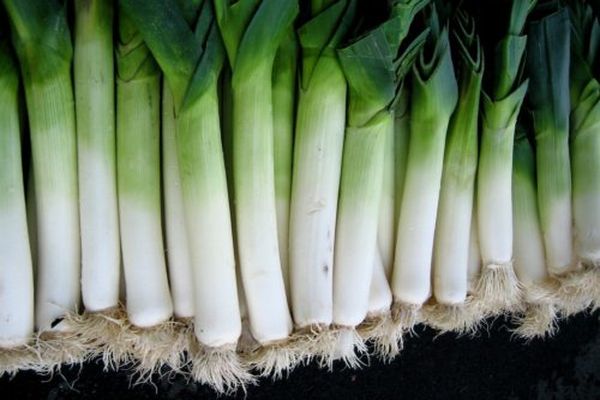
But the taste changes when the leeks are harvested. The pungency and amount of vitamins in a vegetable is influenced by the weather. It is impossible to correct it. But choose the time of harvesting, take into account the period of the maximum amount of nutrients for the gardener.
The taste of autumn, winter and spring dishes depends on how the leeks are preserved. Competent arrangement of the room, temperature and humidity conditions will provide the gardener with gratitude from his family for deliciously prepared food.
Where does the miracle vegetable grow?
Until the beginning of the twentieth century, Russia did not know about the existence of a wonderful vegetable. Then it turned out: the plant is thermophilic, matures for a long time, but you can plant it through seedlings. Now it grows in the southern regions, the central part, in the north-western regions. Leeks are not uncommon in Siberia. But early varieties of vegetables are cultivated there.
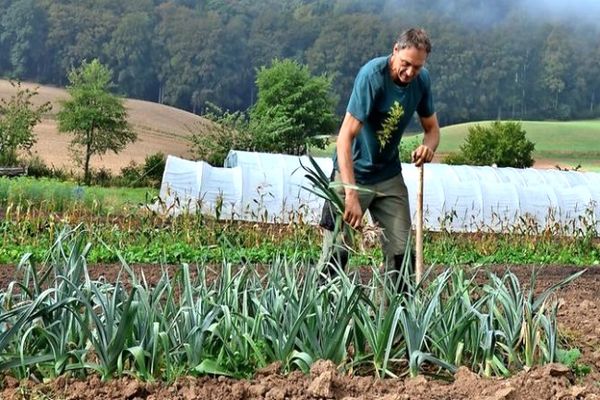
The vegetable ripens 3-4 months after germination. Summer residents of the south grow it through seedlings in a greenhouse. After warming up the earth, the feathers are placed in a permanent place.
In the Middle Lane, gardeners have succeeded in growing vegetables: in January they sow in boxes, in February they dive. Supplemented with phytolamp, ventilated. Placed in a permanent place in April. Plants ripen in August-September.
In the north and northwest, gardeners plant only early varieties and hybrids. The seedling method is used. Outdoor placement time is May. The first crop is removed from the garden in the first decade of September.
Some summer residents allocate a place under the onion in an unheated greenhouse. This measure helps to solve the problem of excessive precipitation. With properly prepared soils, onion plants give an increased yield.

The vegetable tolerates a drop in temperature, variable illumination, and prolonged precipitation. If the sowing dates are observed, the plant will ripen in any region of truck farming.
Cleaning rules
The value of the vegetable is a light (sometimes yellowish) bleached leg. To make it grow long, thick and juicy, gardeners spud the plant 2-3 times per season. As a result, the root system is immersed in the soil to a depth of 70 cm.
How to properly remove a miracle plant from the ground:
- Harvesting should be done after the vegetable is fully ripe. This is indicated by drooping, slightly yellowed leaves.
- Delicate young green vegetables are also used for cooking. But you should not cut it off from the plants intended for storage: the leg will not gain the required thickness.
- A pitchfork will help the gardener remove vegetables without loss. They are less traumatic than a shovel.
- Before choosing a leek, it is recommended to uncook the bushes. The operation should be carried out one day before digging the vegetable.
- The gardener should pay attention to the air temperature and the amount of precipitation. In a cool rainy summer, the ripening time of the plant is postponed by 2-3 weeks.
- It is recommended to finally complete the digging of the vegetable before the onset of the first frost. Leek is a cold-resistant culture. It can withstand temperatures down to minus marks. But keeping quality of frostbitten feet worsens.
- The collection should be carried out in dry weather. This will keep your feet clean. The plant also accumulates the maximum amount of vitamins at this time.
- Spread the dug out plants for 2 hours for airing on the ridge. In cloudy weather (with the threat of rain), move the crop under a canopy.
- It is recommended to collect all the onion legs in one step. This is necessary for storing evenly dried plants. For large plantings, the collected lots should be kept separately.

Green feathers should not be removed from excavated plants at this stage. During storage, useful substances from them will enter the white part - the leg.
How much to dry the crop depends on the weather and location. In sunny times, it is enough to keep it outdoors for 5–7 days. In cloudy weather, the gardener needs to wither the plants in the attic or in the shed. Airing time 10-14 days.
Harvesting and storing leeks are simple activities. Compliance with all the rules will provide gardeners with vitamin products throughout the year.
Vegetable storage recommendations
It is impossible to prepare a vegetable for future use by canning (salting, pickling). It is kept in basements, lower compartments of refrigerators, or frozen.
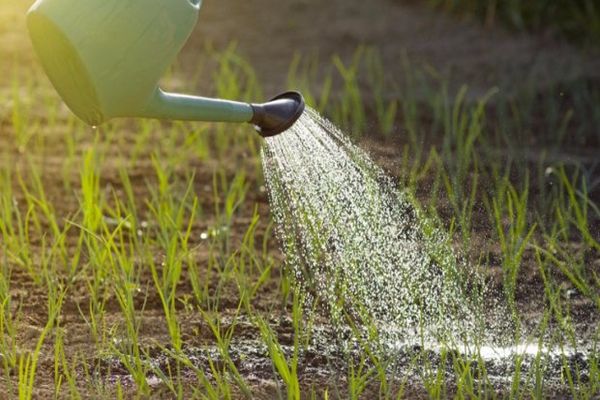
Recommendations for storing leeks in the basement:
- cut the roots off a ripe, dried bush (leave 1 cm);
- carefully shorten the tops by a third (this is enough to preserve vitamins in the leg);
- pour the calcined coarse-grained sand into the box with a layer of 2-3 cm;
- put the bushes vertically, sprinkling with moistened soil;
- the backfill should rise to the length of the plant's leg.
Keep in the dark at 65% humidity. A hygrometer should be used for monitoring.
Some gardeners prefer storing the harvested crop in ridges. Before a steady cold snap, the plantings are once again huddled, covered with fallen leaves with a layer of 20-30 cm, then with a layer of snow. The plant hibernates. In the spring, after thawing, the soil should be shaken off the leaves and carefully dig up the required number of plants. The summer resident has the earliest, freshest greens on the menu.
Leek is a biennial plant. The remaining 2-3 bushes can be left in the garden. They will give an arrow with seeds. The gardener will receive his own planting material. This operation can only be performed with varieties: hybrids do not retain their characteristics.
Leek does not lose vitamins when frozen. Gardeners who do not have a basement prefer to store it in the refrigerator chamber. Remove green leaves from the plant. They wash and dry their feet. Then cut into rings and put in a plastic bag or tray. Prepare immediately after defrosting.
Some summer residents are in no hurry to send the cut green leeks to compost. They are passed through a meat grinder or ground in a blender. Then it is mixed with table salt (to taste) and frozen. Vitamin dressing for soups and borscht is ready.
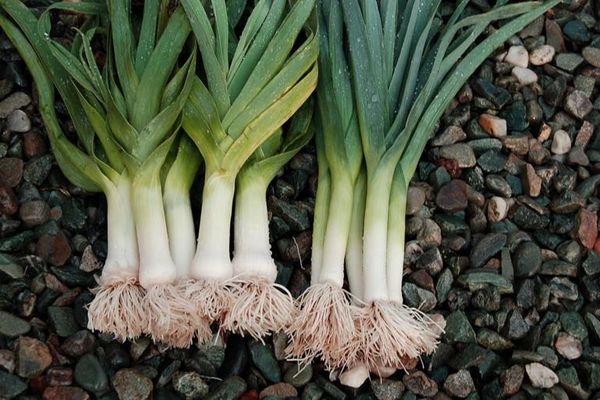
If there is free space in the refrigerator, the collected leek is stored there. The plant is carefully cleaned of damaged leaves, shaken off the soil from the roots and placed in plastic bags or wrapped in cling film. The layer of greenery should not exceed 5-7 cm.
Legs stored in the vegetable compartment should be consumed within 4–5 months. At the same time, air access should be provided to the bags (make perforations).
The old drying method has not exhausted itself. The leg is cut into rings 1–1.5 cm thick and placed in an electric dryer for 4–6 hours. Air temperature during blowing - 40 degrees Celsius. This preserves vitamins. Keep the semi-finished product in a glass container with a ground-in lid in a dry place.
If the gardener does not have a device, you can dry the raw materials in the oven with the door open. Lay parchment on a baking sheet. Spread the chopped onion in a layer of 3 cm. The temperature should be set at 50 degrees Celsius. It is required to stir up the rings every 15 minutes.
You can harvest a miracle ray for future use in different ways. Labor costs when processing a plant are negligible. They will pay off when it comes time to get your supplies out.
Compliance with the rules will preserve the spicy-pungent taste. Vitamin products from our own dacha will diversify the winter menu of gardeners.
